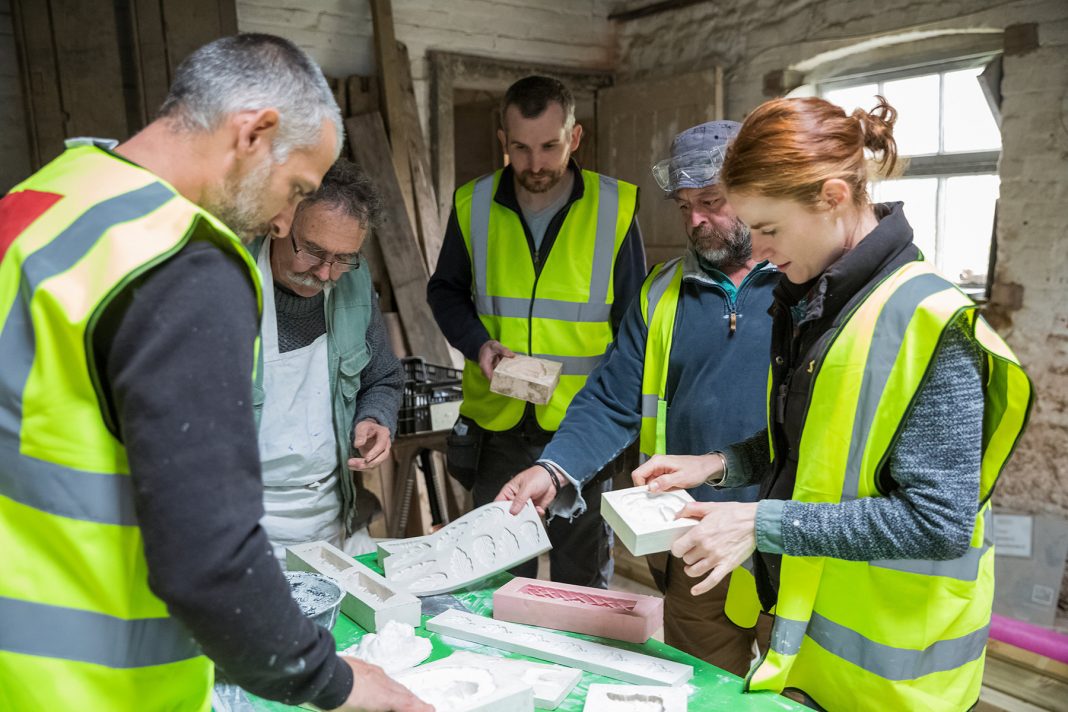Energy efficient retrofitting of the UK’s older buildings could cut carbon emissions from all of its buildings by around 5% a year and generate £35billion of output in the economy, as well making homes warmer and cheaper to run, according to a new report commissioned by the National Trust, Peabody, Historic England, The Crown Estate and Grosvenor due for launch today (March 7).
The organisations have joined together to highlight the huge social, environmental and economic opportunities offered by building a workforce with the necessary skills and training to ensure the UK’s historic buildings contribute to a net zero future.
The report, to be officially launched at an event at The Palace of Westminster, highlights the contribution that historic buildings can make in the fight against climate change, and focuses on the scale of the opportunity to address the skills gap required to meet this challenge.
It shows that more than 105,000 new workers will be needed to work solely on decarbonising the UK’s historic buildings every year for the next three decades for the UK to meet its 2050 net zero target.
Retrofitting things such as windows and heating systems lowers emissions and can prolong the life of an older building.
The coronavirus pandemic, Brexit and an ageing construction workforce have contributed to a skills shortage in the industry in recent years. An estimated 100,000 people currently work on historic buildings. But up to 105,000 new workers will be needed each year until 2050 to focus solely on upgrading buildings built before 1919.
The report finds that, without urgently addressing the need for these extra skills and jobs, the UK might face a backlog of retrofit projects in the 2030s and risks losing some of its cultural heritage if these building become uninhabitable.
Tor Burrows, Grosvenor’s Executive Director of Sustainability and Innovation, said: “The Environmental Audit Committee has called for a national mobilisation on energy efficiency. We believe this captures the urgency of the task. The UK needs a long-term national retrofit strategy, led by the government, positively bringing together training, funding, and standards to sensitively decarbonise our historic buildings.
“We’re calling on the government to work with us on creating a national retrofit strategy that sets out a clear path for upskilling the current workforce while bringing in a whole new generation.”
Lord Kerslake, Chair of Peabody, said: “The benefits of prioritising our historic buildings are economic as well as environmental and social. They are an important source of prosperity and growth, with the heritage sector directly contributing £14.7 billion to the economy in 2019.
“Making these buildings energy efficient will stimulate spending in the construction industry, support around 290,000 jobs in supply chains and boost heritage-related tourism and hospitality.”
Hilary McGrady, Director General of the National Trust, added: “From Georgian town houses to the mills and factories that kick-started our industrial revolution, our historic buildings play a significant role in society, connecting people and places – one of the key pillars of the government’s Levelling Up strategy.
“The stewardship of our built heritage is in our hands, and we must ensure we prepare it for the challenges of climate change. It’s a significant task, but it’s one we can achieve through co-ordinated action. But that action must be taken now.”












